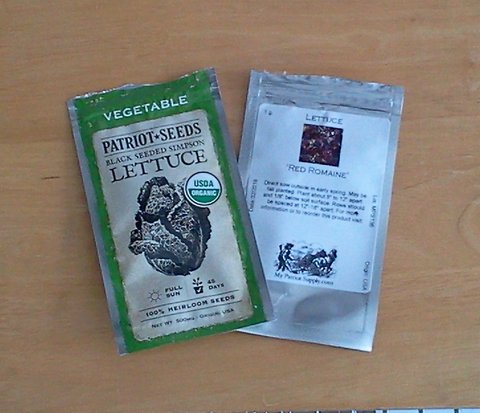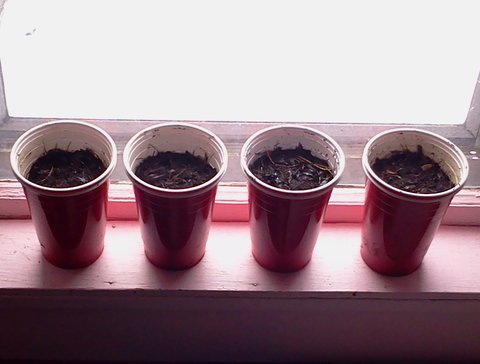
It’s that time of year again and I just got started planting this years crop. Up here in Machias, the ocean causes winter to linger well into late April (we just got 3 inches of snow on Saturday), but I got started planting my indoor stuff.
Friday afternoon I planted lettuce, and today, I did my tomatoes.
As you know from my “Ordering Seed for the Kitchen Garden post” I like to plant Black-Seeded Simpson and Red Romaine lettuce, because they grow well here in zone 5a and because I like their taste. Also, the Black-Seeded Simpson grow in long leaves that make excellent sandwich wraps. There’s nothing better than a tuna melt with pickles and tomato wrapped in a succulent Black-Seeded Simpson leaf.

I put two seeds of each variety into into four pots for a total of eight seeds. I will thin when I transplant them into the garden in a few weeks. If all goes well I should get two Simspson and two Romaine plants for the garden. I do this every month (with Bloomsdale spinach too) and it keeps me in greens for the whole summer.

Today, I planted 48 tomato seeds, also two to a pot. 38 Beafsteak in 19 pots and ten Roma plum tomatoes in five pots. I’ll also thin them when its time to transplant, and should get 24 plants total (19 Beafsteak and five Roma). I like to eat the Roma, in salads and as slices on sandwiches; I usually use the Beafsteak to make pasta sauce.

I used compost for both and red Solo cups as pots. I don’t like to use plastic, but I can’t find anything I like better. I punch five tiny holes in the bottom of half the cups with a thumb tack and then place each one of them in another cup, without holes. It creates a leak-proof “pot”.

I plant all of the seeds about 1/4″ deep and, of course, I’ll keep them wet, until they sprout, and then water them more deeply as time passes, before transplanting them. Also, the tomatoes won’t sprout unless the potting soil is above 70 degrees fahrenheit, so I keep them in the sun or on a small heating mat, when the sun’s not out.
For more thorough planting and harvesting instructions, see My Patriot Supply’s excellent guides:





